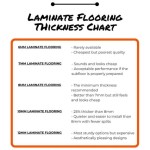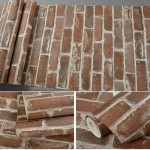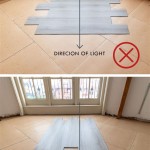White Tile Floor Interior Design: A Timeless and Versatile Choice
White tile floors have been a mainstay in interior design for decades, and for good reason. Their versatility and timeless appeal make them a popular choice for a wide range of spaces, from contemporary lofts to traditional kitchens. This article will delve into the advantages of white tile floors, explore their versatility in different styles and applications, and provide practical advice for incorporating them into your home.
The Allure of White Tile Floors
White tile floors offer a multitude of benefits that contribute to their enduring popularity. Their clean, crisp appearance creates a sense of spaciousness and light, making rooms feel larger and more inviting. This attribute is particularly advantageous in smaller spaces where maximizing visual appeal is crucial. Additionally, white tile's reflective properties enhance natural light, making rooms appear brighter and more cheerful.
Beyond aesthetics, white tile floors are incredibly durable and easy to maintain. They are resistant to scratches, stains, and water damage, making them an excellent choice for high-traffic areas like kitchens, bathrooms, and entryways. Regular cleaning with a mild detergent and water is usually sufficient to keep white tile floors looking their best, minimizing the need for extensive maintenance routines.
Versatility in Style and Application
White tile floors are remarkably versatile, seamlessly integrating into a wide array of interior design styles. Their neutral color palette serves as a blank canvas, effortlessly accommodating diverse design elements. You can create a sleek, modern aesthetic by pairing white tiles with minimalist furnishings and chrome accents. Alternatively, a classic, traditional look can be achieved by combining white tiles with warm wood tones, floral patterns, and antique furniture.
The application of white tile floors extends beyond traditional spaces. They are equally suited for creating stylish outdoor living areas, patios, and balconies. In these settings, white tile floors can be combined with outdoor furniture, plants, and decorative elements to create a serene and inviting atmosphere.
Tips for Incorporating White Tile Floors
When incorporating white tile floors into your interior design, several key factors should be considered. The size and shape of the tiles can significantly impact the overall aesthetic. Larger tiles create a sense of spaciousness, while smaller tiles add visual interest and pattern. The grout color also plays a crucial role in defining the look of the floor. Light-colored grout blends seamlessly with the white tiles, creating a clean and cohesive aesthetic. Darker grout, on the other hand, adds contrast and emphasizes the tile pattern.
The layout of the tiles can further enhance the visual appeal of your floor. Traditional grid patterns provide a classic and timeless look, while staggered or herringbone patterns offer a more contemporary and dynamic feel. The choice of layout should complement the overall style of the space.
Incorporating white tile floors into your home is a decision that can elevate your interior design, enhance your living spaces, and provide a foundation for many years to come. Their timeless elegance, versatility, and practicality make them an investment worth considering for any homeowner seeking to create a stylish and functional environment.

White Floor Tile Ideas For Your Modern Home Interior

An All White Interior A Secret For Timeless Home

6 White Floor Tile Design For A Simple And Elegant Home

White Tile Floor Living Room

White Floor Tiles For Living Room

White Floor Tile Best Ceramic Porcelain China Hanse Whole Tiles Supplier

Things To Remember Caring For White Floor Tiles

6 White Floor Tile Design For A Simple And Elegant Home

40 White Floor Tiles For Your Living Room Bathroom

White Marble Flooring Ideas For Any Style Budget Stone Tile Depot
Related Posts








